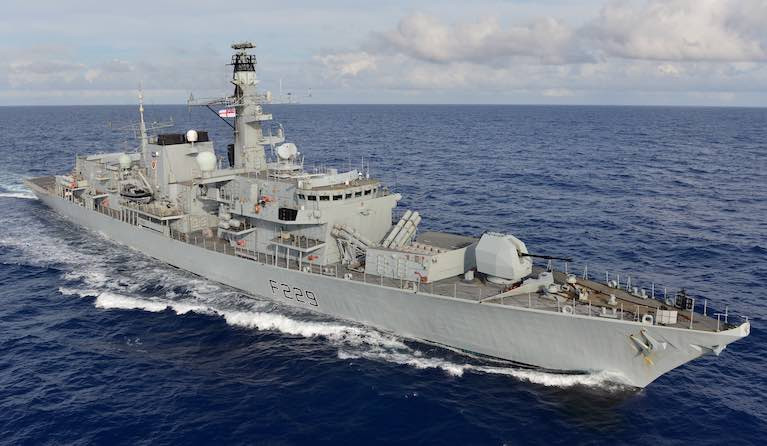The Government has opted not to pursue an incident where a British navy ship instructed an Irish fishing vessel to leave grounds where it was working some 60 miles off the Donegal coast.
The 32-metre fishing vessel Marlíona, registered in Greencastle, Co Donegal, was hailed by the British navy ship HMS Lancaster on July 21st last and asked to leave the area, even though it is well within the Irish exclusive economic zone (EEZ).
The Department of Foreign Affairs said it was investigating the incident, which had been referred to the Sea Fisheries Protection Authority (SFPA) by the Killybegs Fishermen’s Organisation (KFO).
However, the department has subsequently said the location was “not within Ireland’s territorial sea and did not, therefore, infringe our sovereignty”.
“In general, it is not unusual for naval ships to ask other vessels in the vicinity to move away from an exercise location for safety reasons,” the department said.
A British navy spokesperson said that “courteous and professional exchanges between the fishing vessel and frigate operating within the designated exercise area enabled this lawful exercise to continue and conclude safely”.
“The safety of all mariners is taken extremely seriously by the Royal Navy. At no time was there a risk to safety to either the fishing vessel or submarine,” the British navy spokesperson said.
The British Directorate of Defence Communications said the ship “operated throughout in accordance with the UN Convention of the Law of Sea, having due regard for other vessels operating in the area”.
However, KFO chief executive Sean O’Donoghue has said there is now a case for the Government to state that the Irish EEZ should be protected from military training exercises by submarines on environmental grounds.
The Celtic League non-governmental organisation based in the Isle of Man has written to the Taoiseach Micheál Martin on the issue.
It says that the dangers posed to fishing vessels by the activity of submarines “of all powers” were “highlighted graphically” when the Irish MFV Sharelga (italics) was sunk by HMS Porpoise” off the Co Louth coast in April, 1982.
“No lives were lost on that occasion however, unfortunately, that was not the case sometime later when the Scottish MFV Antares was sunk - all crewmen died,” the letter by league assistant general secretary Bernard Moffatt states.
He refers to the recent towing of Co Down MFV Karen by a British submarine, and says an inquest in Cornwall has “still to determine the fate of the crew members of the Breton trawler Bugaled Breizh lost of the Lizard during a NATO exercise”.
Mr Moffatt reminds Mr Martin that a campaign via an Irish government initiative led to the adoption of two International Maritime Organisation (IMO) resolutions.
Mr Moffatt says one of these two resolutions, A709 (17), places an onus on the British navy to move the exercise or cease it, rather than request the fishing vessel to give way.
Asked to comment on the issue, the Department of Agriculture, Food and Marine said that the issue was “not relevant” to it and referred to the Department of Foreign Affairs.
The Department of Foreign Affairs said the issue was one for the Department of Agriculture, Food and Marine.































































